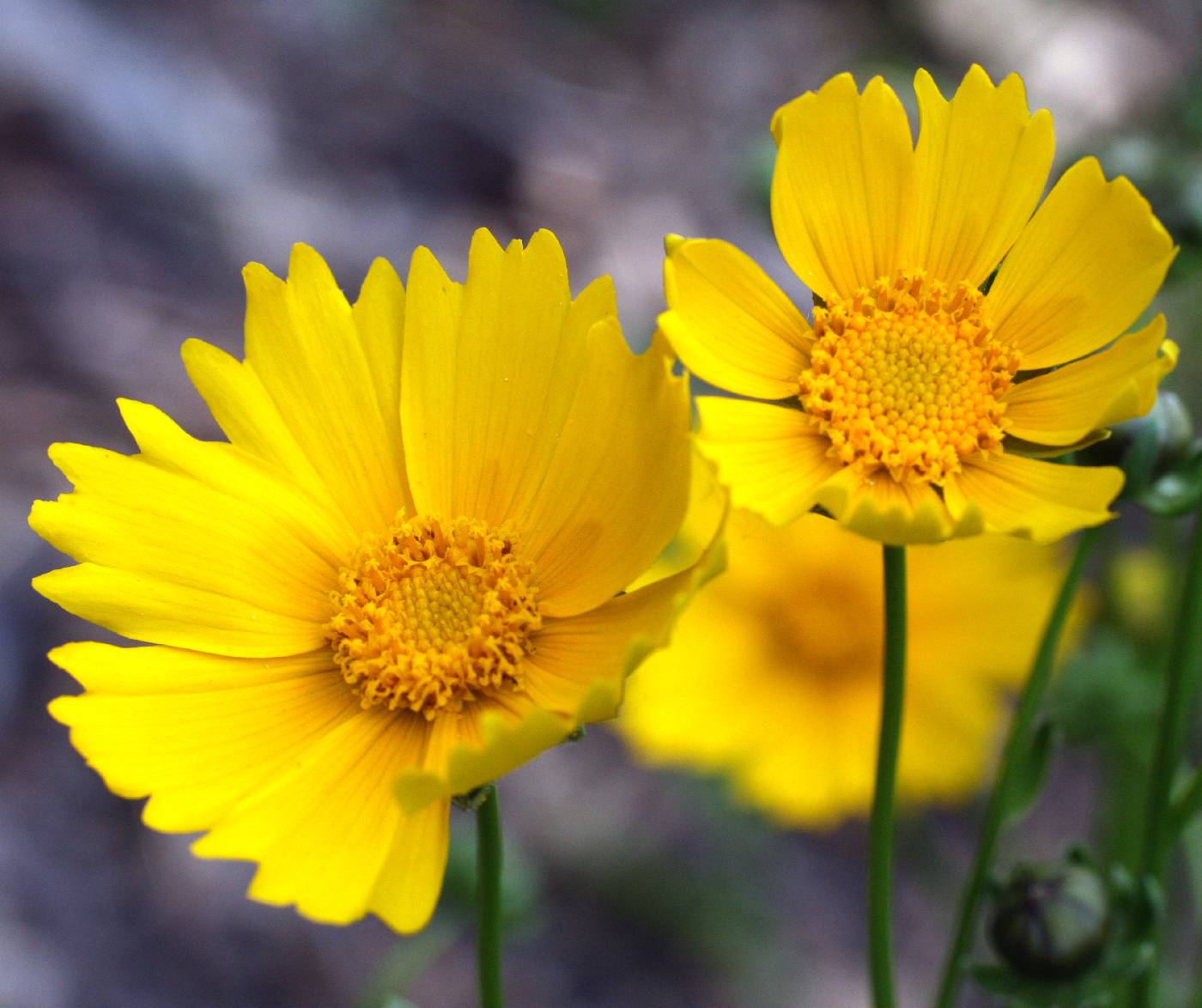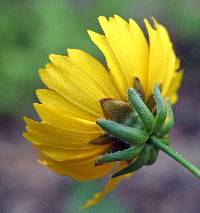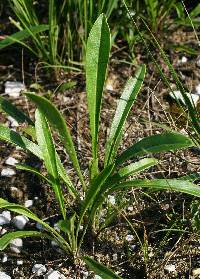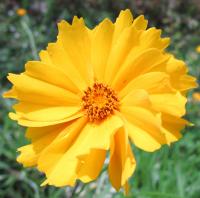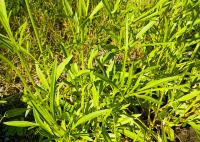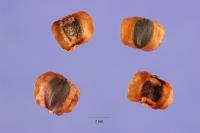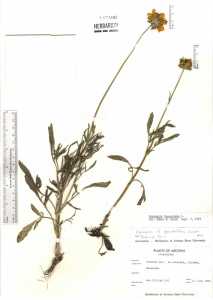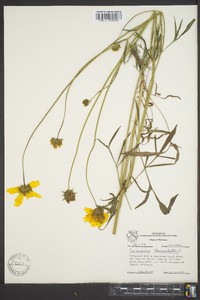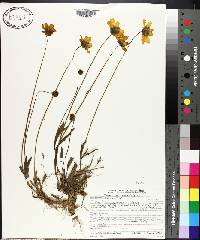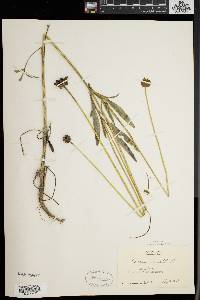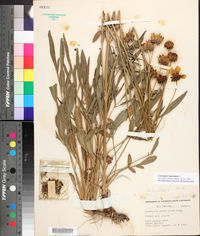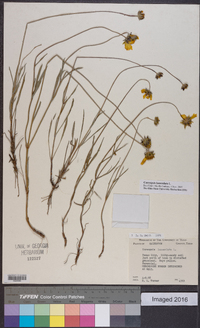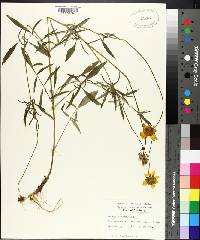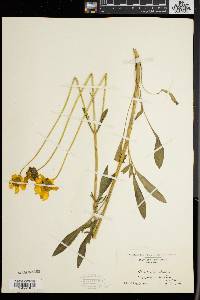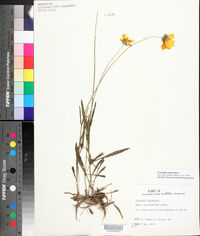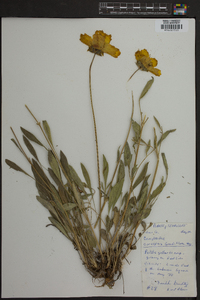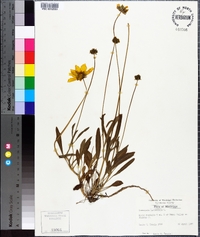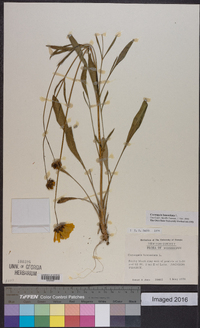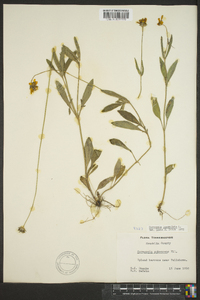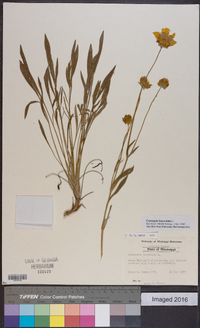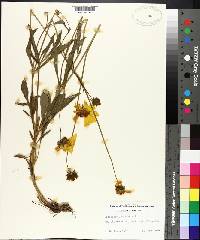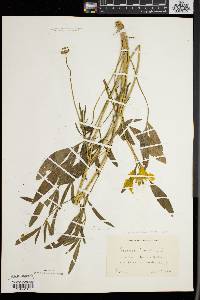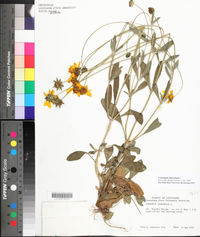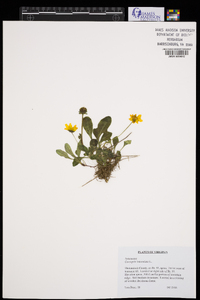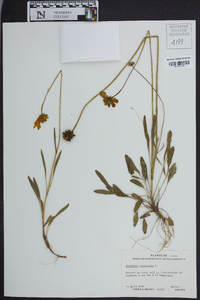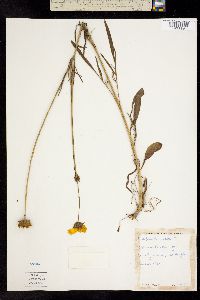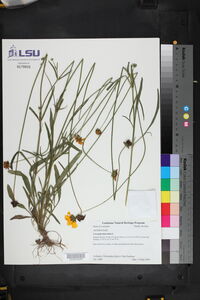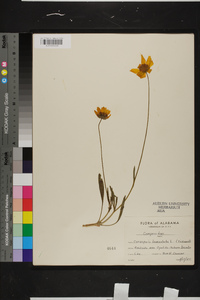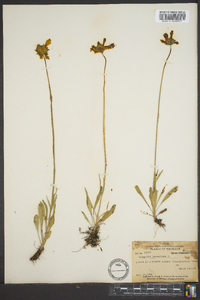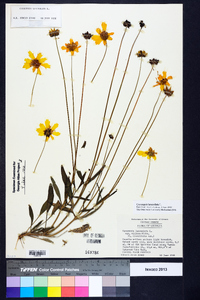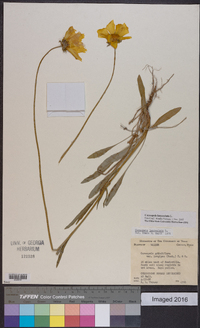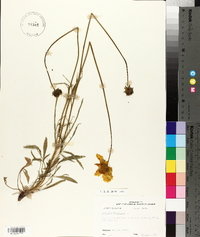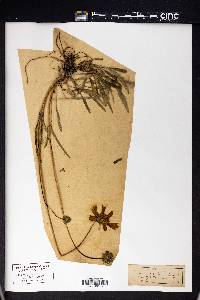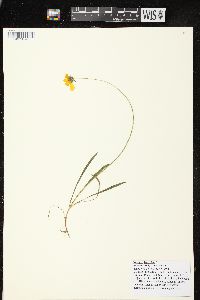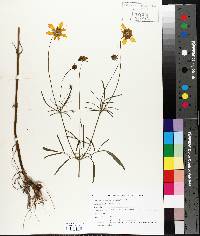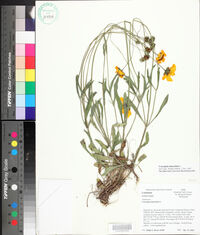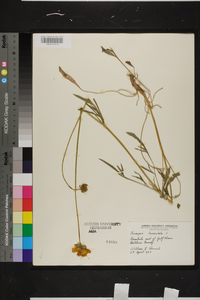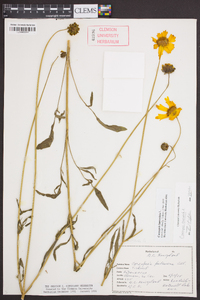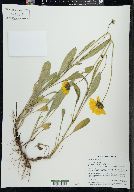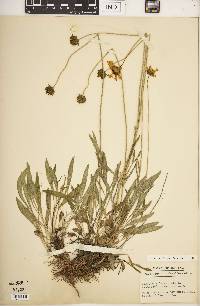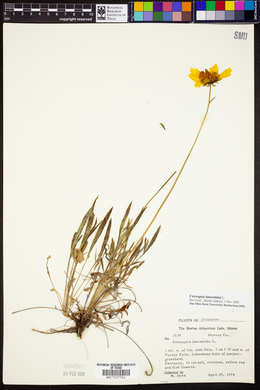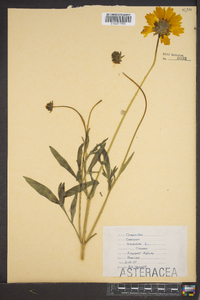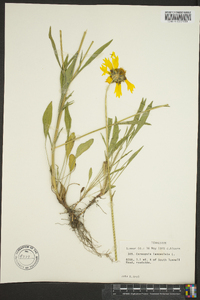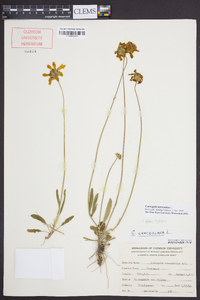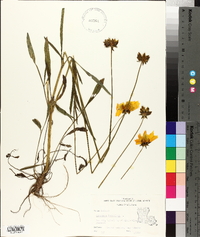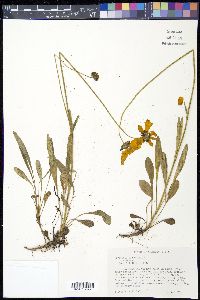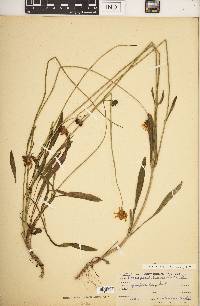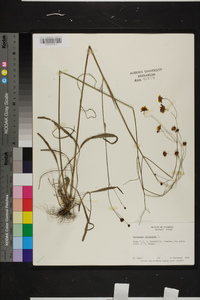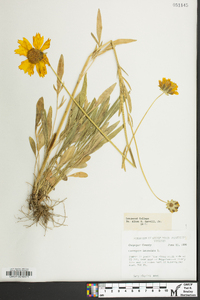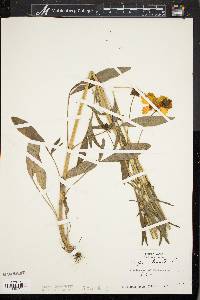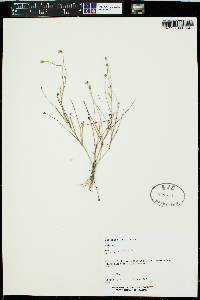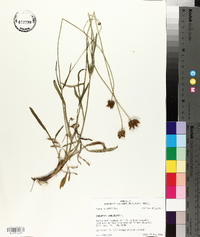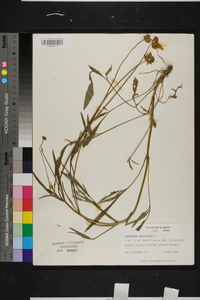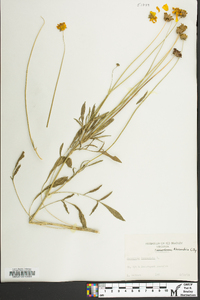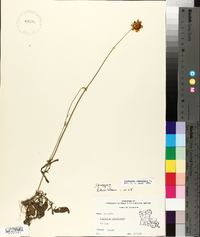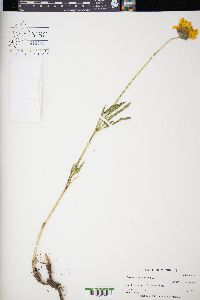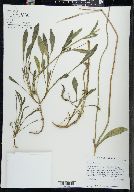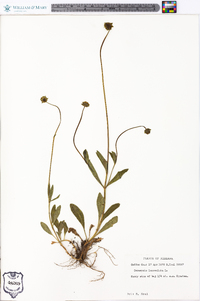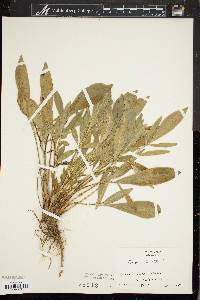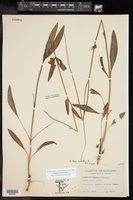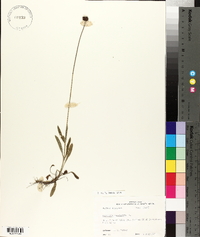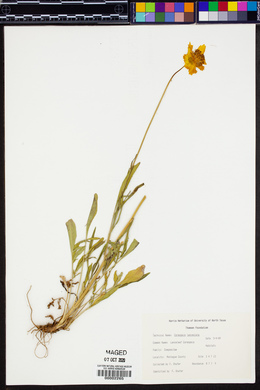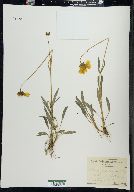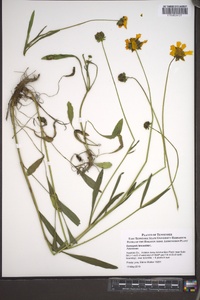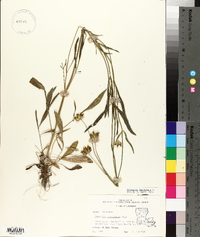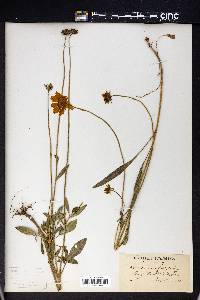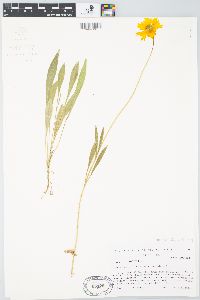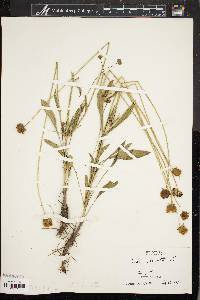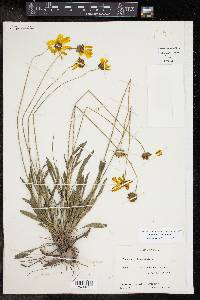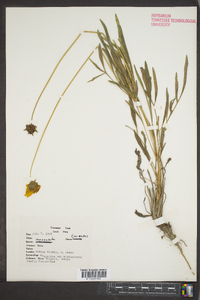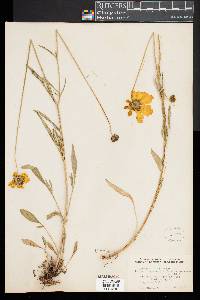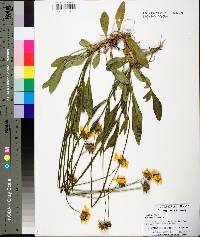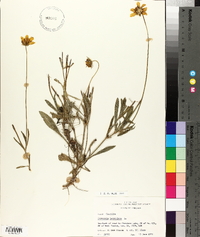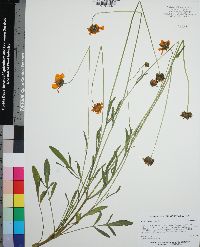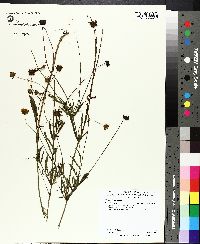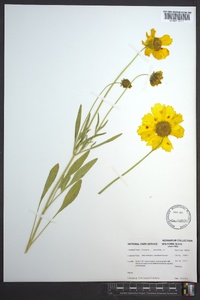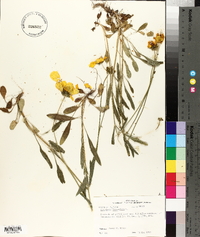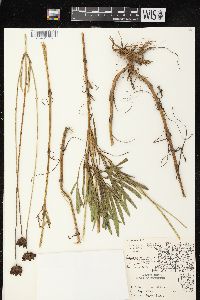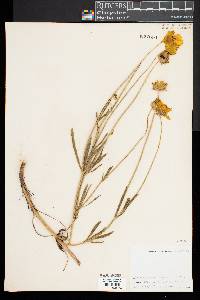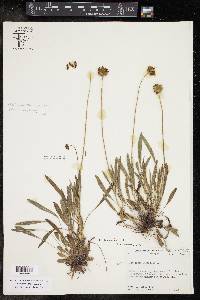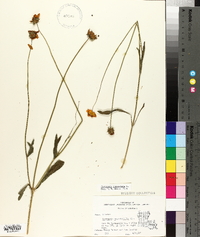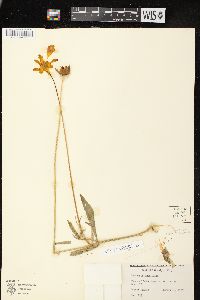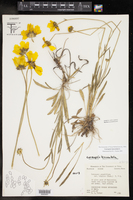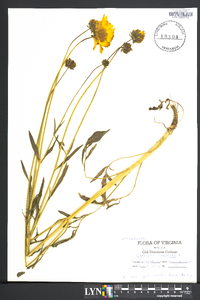
|
|
|
|
Family: Asteraceae
Lance-Leaf Tickseed
[Bidens lanceolata (L.) Banfi, Galasso & Bartolucci, moreCoreopsis crassifolia Sessé & Moc., Coreopsis heterogyna Fernald, Coreopsis lanceolata var. glabella Michx., Coreopsis lanceolata var. lanceolata , Coreopsis lanceolata var. villosa Michx., Coreopsis oblongifolia Nutt.] |
Perennials, 10-30(-60+) cm. Aerial nodes proximal to first peduncle usually 1-3(-5+), distalmost 1-3 internodes 1-2(-8+) cm. Leaves: basal and cauline on proximal 1/4-1/3(-1/2) of plant heights; petioles 1-5(-8+) cm; blades simple or with 1-2+ lateral lobes, simple blades or terminal lobes lance-ovate or lanceolate to oblanceolate or lance-linear, 5-12 cm × 8-15(-18+) mm. Peduncles (8-)12-20(-35+) cm. Calyculi of lance-ovate to lance-linear or linear bractlets 4-8(-12) mm. Phyllaries deltate to lance-deltate, 8-12+ mm. Ray laminae yellow, 15-30+ mm. Disc corollas 6-7.5 mm, apices yellow. Cypselae (2.6-)3-4 mm, wings ± spreading, ± chartaceous, entire. 2n = 26 (+ 0-4B). Flowering (Mar-)May-Jul(-Aug). Sandy soils, ditches and roadsides, other disturbed sites; 30-500(-1000+) m; B.C., Ont.; Ala., Ark., Fla., Ga., Ill., Ind., Kans., Ky., La., Md., Mich., Miss., Mo., N.J., N.Mex., N.Y., N.C., Ohio, Okla., Pa., S.C., Tenn., Tex., Vt., Va., W.Va., Wis. Plants that have been called Coreopsis lanceolata var. villosa Michaux often have 5+ aerial internodes 6+ cm long proximal to the first peduncle; they may merit recognition as a distinct taxon or may be hybrids (or derivatives) from crosses between C. lanceolata and C. pubescens.
Clustered perennial 2-6 dm from a short caudex, glabrous or spreading-villous; stems leafy below, elongate and naked above; lvs spatulate to linear or lance-linear, simple or with 1 or 2 pairs of small lateral lobes, the lower long-petiolate, mostly 5-20 cm overall and 0.5-2 cm wide; the others reduced and sessile or nearly so; heads few or solitary on long, naked peduncles, the disk yellow, 1-2 cm wide; outer bracts 8-10, lanceolate to oblong-ovate, ±scarious-margined, 5-10 mm; inner bracts longer and broader; rays 1.5-3 cm; receptacular bracts flat and chaffy below, caudate-attenuate above; disk-fls 5-toothed; style appendages cuspidately acute; achenes 2-3(-4) mm, orbicular or broader, with thin, flat wings; pappus of 2 short, chaffy teeth; 2n=24, 26, 48. Dry, often sandy places; Mich. and the n. shore of Lake Superior to Fla. and N.M.; cult. and often escaped. Apr.-June. (C. crassifolia; C. heterogyna) Gleason, Henry A. & Cronquist, Arthur J. 1991. Manual of vascular plants of northeastern United States and adjacent Canada. lxxv + 910 pp. ©The New York Botanical Garden. All rights reserved. Used by permission. From Flora of Indiana (1940) by Charles C. Deam Infrequent in very sandy, dry soil on open dunes and knolls in the northwestern counties. The species and variety are sometimes closely associated. The species is much cultivated in gardens and doubtless our Marion County report should be considered a garden escape. It has been reported also from St. Joseph, Steuben, and Vigo Counties, where no doubt, it is native. The Vigo County specimen was collected by Blatchley at Five-mile Pond. I have, however, very thoroughly botanized Steuben County without finding it; it may be a garden escape in this county. My specimens and our reports of this variety [pubescent plants known as var. villosa] are all from the few northwestern counties shown on the map. The habitat is the same as that of the species, but the variety is less frequent. |
This project was made possible in part by the Institute of Museum and Library Services [MG-70-19-0057-19].
Powered by Symbiota

